The latest statistics on the Civil Service Fast Stream are in the news today, through the Social Mobility and Child Poverty Commission’s State of the Nation report and an article by Gloria de Piero, Labour’s Shadow Equalities Minister. Petr Bouchal and Gavin Freeguard look at the longer-term trends.
See the latest data on applications and appointments to the Civil Service Fast Stream on our blog. Civil Service Fast Stream recruitment is very competitive, though in 2013 more positions became available 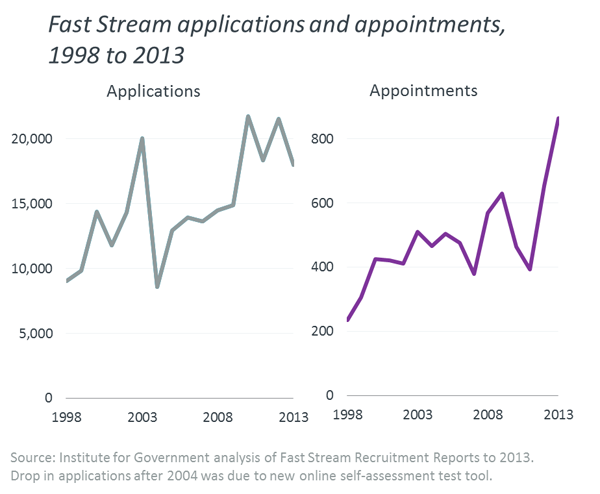
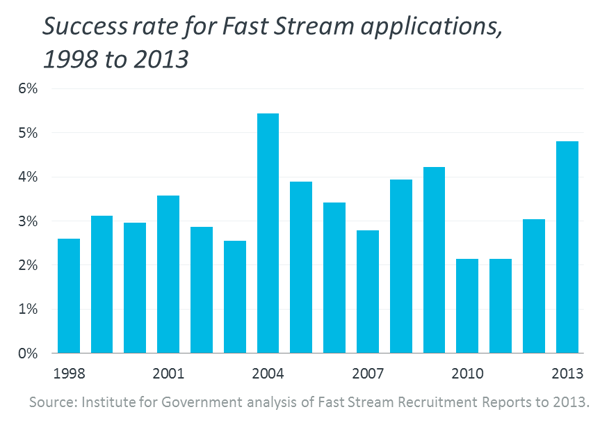
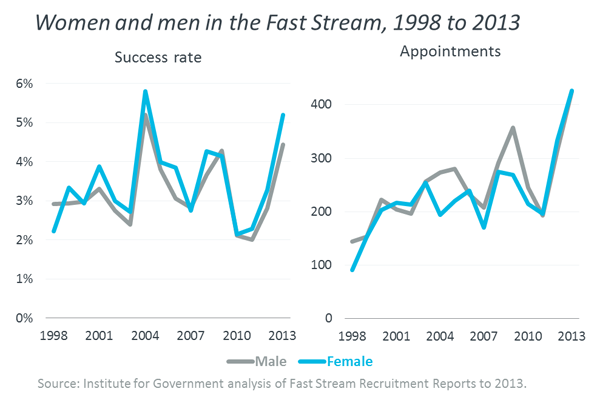
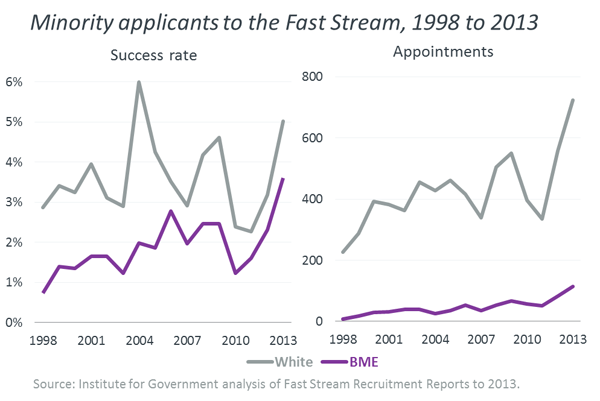
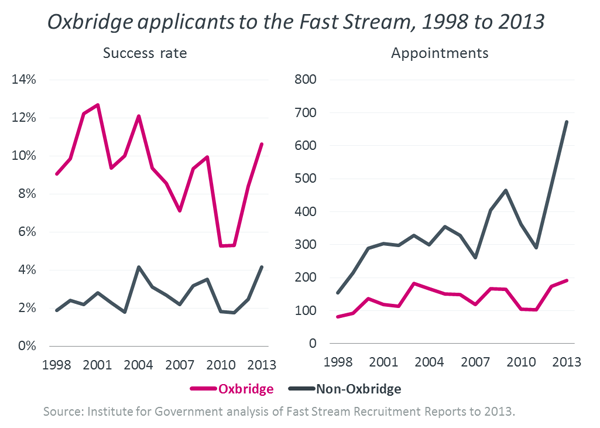
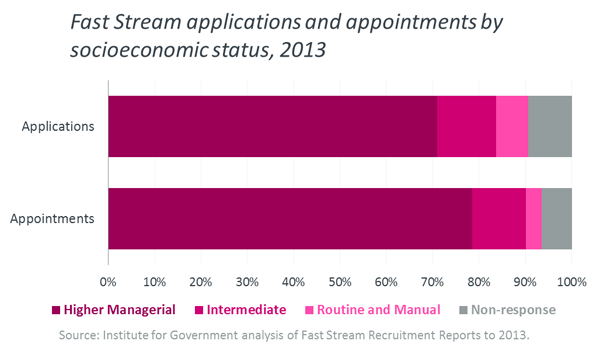
‘only 30 new recruits out of 864 entrants to the Fast Stream in 2013 – 3.5 per cent – were from working-class backgrounds. Applicants from working-class backgrounds are less than half as likely to be successful in their application as those from middle-class backgrounds. There are particular issues with the main scheme recruiting generalist civil servants, where only 3 out of 357 entrants – 0.8 per cent were from working-class background.’
Calling the findings ‘disturbing’, the Commission also expresses its disappointment that ‘tackling this issue was not highlighted as a bigger theme in the recent civil service Talent Action Plan’ (the Institute’s Jill Rutter looked at the gender side of that report in an earlier blog). But the Commission does say collecting the data is ‘a very welcome first step’, though only ‘if the issues it has revealed are resolved’. We’ll continue to monitor the data on this – only by understanding the composition of the Civil Service can we understand what needs to change, and how.
- Topic
- Civil service
- Administration
- Cameron-Clegg coalition government
- Publisher
- Institute for Government